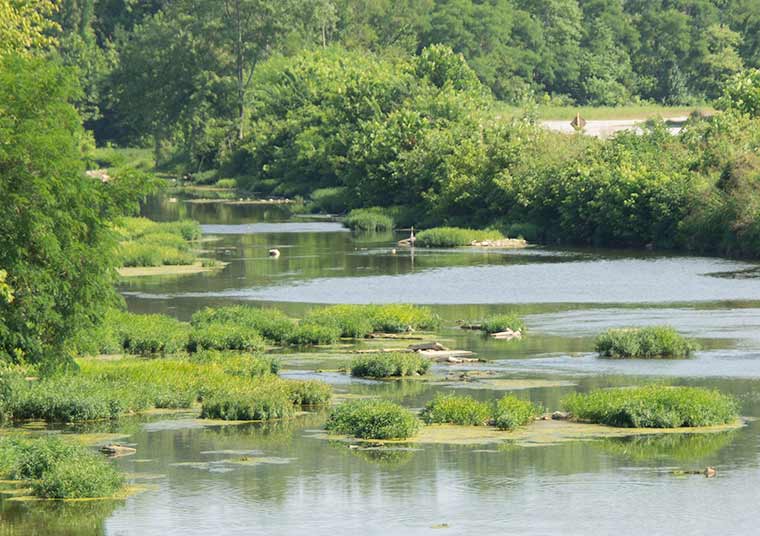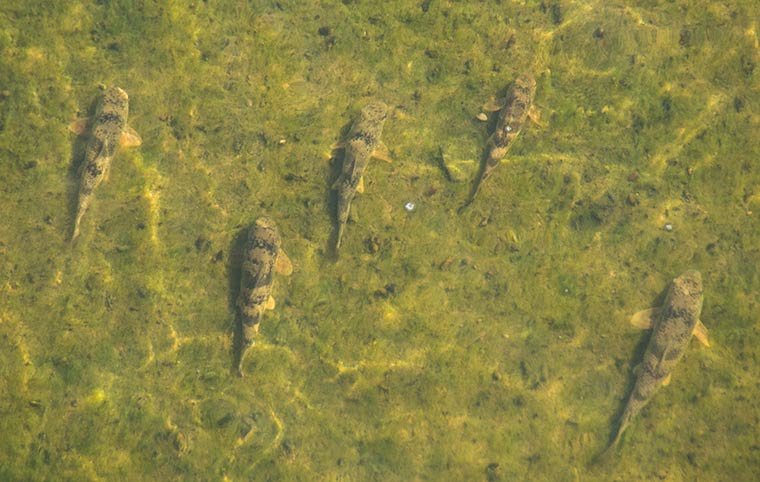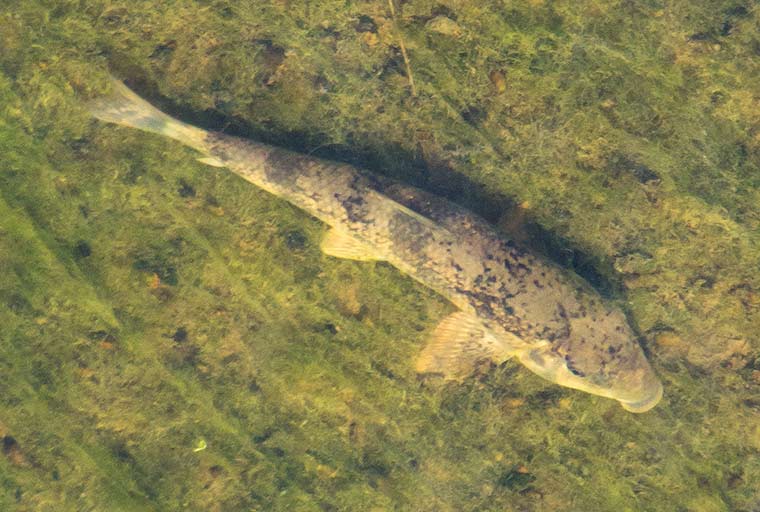We just returned from a trip to Indiana, where both Joyce and I grew up and attended high school. This is a view of Big Indian Creek at Corydon, Indiana. Streams in that area are very different from those in the Georgia Piedmont. The bedrock is limestone, and the steams are very clear.
While standing on a bridge over the creek, I could see many kinds of fish. Among them were schools of Hogsuckers (Hypentelium nigricans). The photograph shows a small group of them (these are about 6-8 inches long, but they can grow to two pounds under favorable conditions). Hogsuckers prefer to feed in rapidly moving water, where they turn over small stones and debris looking for the small invertebrates and plant material that they prefer as food. Other fish, such as Smallmouth Bass (Micropterus dolomieu) or various panfish will sometimes follow them to eat the larger creatures, such as crayfish, that the Hogsuckers dislodge. Hogsuckers are a good indicator that the water is relatively pure, because they do not thrive in polluted or muddy water,
This closeup view shows the main features of a Hogsucker. They have a large head, lips that protrude down from the front of the head, and a series of back bars across their body.
Hogsuckers are members of the sucker family (Catostomidae). I am not sure why they are called “Hog” suckers. Perhaps it is because they root around in the shallow water like hogs (of the porcine variety). Their generic name “Hypentelium” means “five-lobed” and refers to their five prominent ventral fins. They have two very large and strong pectoral fins, which they use to help anchor them in the swift water where they feed, plus two pelvic and one anal fin.




The river is beautiful! One question I have is – are the Hogsuckers eatable?
When we lived in FL some of the guys working on our house invited us to a feast they were having on the shore of the river. They waded in & caught the suckers, as they called them by hand, & through them on the bank. I didn’t attend but was brought one of the fish to eat after it was cooked. I don’t know if they skinned it or descaled it, but they cut gashes in the fish & believe it or not it was delicious. Fried, of course!
Hogsuckers are edible, but just barely. I don’t know what sort of suckers you ate in Florida, but Hogsuckers are not native there. However, eight other species of the sucker family are found in Florida. Some of these are caught and eaten in the manner you described. See http://outdoorsdownsouth.com/fishing-for-suckers/#comments for a blog post that describes this activity. I can’t be sure of the species you were served, however.